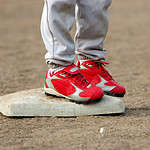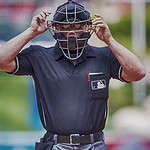Baseball yips is a topic that has been a source of frustration for many players. The term “yips” refers to a sudden and unexplained loss of control that can occur during a player’s performance. This can manifest in a variety of ways, such as difficulty throwing accurately or trouble hitting the ball.
The causes of baseball yips are not fully understood, but it is believed to be related to a combination of psychological and physiological factors. Some players may experience anxiety or stress that affects their performance, while others may have a physical issue that affects their coordination. Regardless of the cause, baseball yips can be a significant obstacle for players looking to perform at their best.

Understanding the Baseball Yips
The baseball yips is a phenomenon that affects many baseball players, both amateur and professional. It is a condition that is characterized by involuntary muscle spasms and movements that can affect a player’s ability to throw, catch, or hit the ball. The yips can be caused by a variety of factors, including anxiety, fear, overthinking, and even neurological disorders.
One of the most common causes of the yips is anxiety. When a player becomes anxious or nervous, they may start to overthink their movements or become too focused on the outcome of their actions. This can lead to involuntary muscle spasms or movements that can affect their performance on the field.
Another factor that can contribute to the yips is fear. Players who have experienced a traumatic event on the field, such as a serious injury or a bad play, may develop a fear of repeating that event. This fear can cause them to overthink their movements or become too cautious, which can lead to involuntary muscle spasms or movements.
Focal dystonia is a neurological disorder that can also cause the yips. This disorder affects the part of the brain that controls muscle movements, and can cause involuntary muscle contractions or spasms. While focal dystonia is rare, it can affect baseball players who rely on precise muscle movements to perform on the field.
In conclusion, the baseball yips is a complex condition that can be caused by a variety of factors, including anxiety, fear, overthinking, and even neurological disorders. While there is no one-size-fits-all solution to the yips, players who experience this condition can work with coaches and medical professionals to develop strategies to overcome it.
Famous Cases of Yips in Baseball
Rick Ankiel’s Struggle
Rick Ankiel was a promising young pitcher for the St. Louis Cardinals in the early 2000s. However, during the 2000 playoffs, he suddenly lost his ability to throw strikes, leading to a string of wild pitches that ultimately ended his career as a pitcher. Ankiel attempted to come back as an outfielder, and was able to have some success, but his pitching struggles remain one of the most famous cases of the yips in baseball history.
The Steve Blass Disease
Steve Blass was a right-handed pitcher for the Pittsburgh Pirates in the 1970s. He was a key contributor to the team’s World Series victory in 1971, but the following year, he suddenly lost his ability to throw strikes. This condition, which came to be known as the “Steve Blass Disease,” effectively ended his career as a major league pitcher.
Chuck Knoblauch’s Throwing Issues
Chuck Knoblauch was a second baseman for the New York Yankees in the late 1990s and early 2000s. He was a four-time All-Star and a key contributor to the team’s World Series victories in 1998, 1999, and 2000. However, in 1999, he suddenly began to struggle with his throwing accuracy, leading to a string of errors that ultimately forced him to move to left field.
Jon Lester’s Battle
Jon Lester is a left-handed pitcher who has spent much of his career with the Boston Red Sox and Chicago Cubs. In 2015, he suddenly began to struggle with his throwing accuracy, leading to a string of wild pitches and a loss of confidence on the mound. However, he was able to work through these issues and has since regained his form as a top-tier pitcher.
Daniel Bard’s Journey
Daniel Bard was a highly-touted reliever for the Red Sox in the early 2010s. However, in 2012, he suddenly began to struggle with his control, leading to a string of walks and wild pitches that ultimately led to his demotion to the minor leagues. Bard attempted to come back as a pitcher for several other teams, but was never able to regain his form.
Overall, the yips are a mysterious and often devastating condition that can strike even the most talented athletes. While some players are able to work through these issues and regain their form, others are forced to retire or move to different positions on the field.
Yips Beyond Baseball
The yips are not exclusive to baseball and can affect athletes in other sports as well. Here are some examples of how the yips can manifest in other sports:
Yips in Golf
Golfers may experience the yips when putting, which can cause them to lose confidence and accuracy on the green. The yips can also affect golfers when driving off the tee and hitting approach shots. Golf legend Tommy Armour famously battled the yips and even wrote a book about his struggle called “How to Play Your Best Golf All the Time.”
Yips in Tennis
The yips can affect tennis players when serving, causing them to lose control and accuracy. This can be especially frustrating for players who rely on their serve as a weapon. Tennis players may also experience the yips when hitting groundstrokes or volleys, which can lead to a loss of confidence and consistency.
Yips in Cricket
In cricket, bowlers may experience the yips when trying to deliver the ball, leading to a loss of accuracy and control. This can be especially problematic in high-pressure situations such as a close match or a tournament final. Batsmen may also experience the yips when trying to hit certain types of deliveries, causing them to lose confidence and struggle at the crease.
Overall, the yips can be a frustrating and debilitating condition for athletes in a variety of sports. While there is no one-size-fits-all solution, athletes can work with coaches and sports psychologists to develop strategies for overcoming the yips and regaining their confidence and form.

Psychological Aspect of Yips
The yips are a phenomenon that can have a significant psychological impact on a baseball player. Performance anxiety, pressure, and overthinking are some of the psychological factors that can contribute to the development of the yips.
Sports psychologists can play a crucial role in helping players overcome the yips. They can work with players to build confidence, develop mental strategies to manage anxiety and pressure, and reduce overthinking.
One of the critical components of overcoming the yips is building confidence. Players who experience the yips often lose confidence in their ability to perform, which can exacerbate the problem. A sports psychologist can help players develop a positive mindset and build confidence in their abilities.
Overthinking is another factor that can contribute to the yips. Players who overthink their movements and actions on the field can become overly self-conscious, which can lead to mistakes. Sports psychologists can help players develop mental strategies to quiet their minds and reduce overthinking.
Pressure is another factor that can contribute to the yips. Players who feel pressure to perform can become overly anxious and tense, which can lead to physical and mental mistakes. Sports psychologists can help players develop mental strategies to manage pressure and perform at their best.
In conclusion, the yips can have a significant psychological impact on baseball players. Sports psychologists can play a crucial role in helping players overcome the yips by building confidence, developing mental strategies, and reducing overthinking and pressure.
Physical Manifestations and Impacts
The physical manifestations of baseball yips can vary depending on the player and position. Pitchers may experience twitches or tremors in their throwing arm, which can lead to wild pitches or difficulty locating the strike zone. Catchers may struggle with their grip, leading to passed balls or difficulty throwing out runners. Outfielders may experience spasms or jerks when trying to make a throw.
Steve Sax, a former second baseman for the Los Angeles Dodgers, famously struggled with the yips in the late 1980s. He would make errant throws to first base, even on routine plays. The yips can impact players’ confidence and lead to a decline in performance.
The yips can also affect players’ throwing mechanics and fine motor skills. When a player is focused on not making a mistake, they may overthink their movements and disrupt their muscle memory. This can result in a breakdown of their throwing mechanics and difficulty making accurate throws.
It’s important for players to address the yips as soon as possible, as they can become a mental block that is difficult to overcome. Working with a coach or sports psychologist can help players regain their confidence and improve their performance.
Overcoming the Yips
The yips can be a frustrating and debilitating condition for baseball players. However, there are techniques and therapies that can help players overcome this issue and regain control on the field.
Focus on Technique
One way to overcome the yips is to focus on improving technique. This can involve working with a baseball coach to identify any flaws in your throwing or pitching motion that may be contributing to the yips. By addressing these issues, you can improve your accuracy and control, which can help alleviate the yips.
Mental Control
Another important aspect of overcoming the yips is mental control. This can involve techniques such as visualization, deep breathing, and mindfulness meditation. By learning to stay calm and focused under pressure, you can reduce anxiety and regain control on the field.
Therapy
In some cases, therapy may be necessary to overcome the yips. This can involve working with a sports psychologist or other mental health professional to address any underlying psychological issues that may be contributing to the yips. By addressing these issues, you can improve your mental and emotional well-being, which can help alleviate the yips.
Comeback Strategies
If you have experienced the yips in the past, it is important to have a comeback strategy in place. This can involve working with a coach or therapist to develop a plan for overcoming the yips and regaining your pitching or throwing ability. By staying focused and committed to your goals, you can overcome the yips and return to your previous level of performance.
Overall, overcoming the yips requires a combination of focus, technique, mental control, and therapy. By working with a coach or therapist and staying committed to your goals, you can overcome this frustrating condition and regain control on the field.
Yips in Athletic Performance Research
The yips are a phenomenon that can affect athletes in a variety of sports, including baseball. The term “yips” refers to a sudden and unexplained loss of control over a particular skill or movement. In baseball, this can manifest as a pitcher suddenly being unable to throw strikes or a fielder being unable to make routine throws.
Research into the yips has been ongoing for several decades, with a particular focus on golf and baseball. In recent years, there has been a growing interest in the neuroscience behind the yips and how they can be treated.
One study published in the Journal of Sports Sciences found that the yips are more common in baseball pitchers who throw at a higher velocity. This suggests that the yips may be related to the increased demands placed on the motor system at higher velocities.
Sports Illustrated has also covered the topic of the yips in baseball, highlighting the experiences of several high-profile players who have struggled with the condition. The article notes that the yips can have a significant impact on an athlete’s mental health and well-being, as well as their performance on the field.
The Mayo Clinic has identified several potential causes of the yips, including anxiety, overthinking, and changes in the brain related to aging or injury. Treatment options may include relaxation techniques, cognitive-behavioral therapy, and medication.
Overall, while much is still unknown about the yips, research into this phenomenon is ongoing and may provide valuable insights into the neuroscience of athletic performance.
Frequently Asked Questions
What are the yips in baseball?
The yips in baseball are a sudden and unexplained loss of control in a player’s throwing or pitching motion. It can manifest as a sudden inability to throw the ball accurately or with consistent velocity. This can be incredibly frustrating for players, as it can affect their performance and confidence on the field.
How do you fix the yips in baseball?
There is no one-size-fits-all solution for fixing the yips in baseball. Some players find success by taking a break from the game and focusing on mental and physical relaxation techniques. Others may benefit from working with a sports psychologist or coach to address any underlying psychological or technical issues that may be contributing to the yips.
Why is it called yips?
The term “yips” is believed to have originated in golf, where it was used to describe a sudden and inexplicable loss of putting ability. The term has since been adopted by other sports, including baseball, to describe a similar phenomenon.
Can the yips be cured?
While there is no guaranteed cure for the yips, many players have been able to overcome the condition with a combination of mental and physical training. It may take time and patience, but with the right approach, players can regain their confidence and control on the field.
What causes the yips in baseball?
The exact cause of the yips in baseball is not well understood, but it is believed to be a combination of psychological and physiological factors. Some players may experience the yips as a result of anxiety, stress, or other mental health issues, while others may have underlying physical issues that affect their throwing motion.
What are the yips in football?
While the yips are most commonly associated with baseball and golf, they can also occur in football. In football, the yips may manifest as a sudden inability to accurately throw or kick the ball, or as a sudden loss of confidence in a player’s ability to perform on the field.
- UCLA Softball: Let’s Go Bruins! - February 12, 2024
- Youth Softball Helmet Buying Guide: Keep ‘Em Safe - February 12, 2024
- Youth Softball Pants: Our Top Picks for Your Top Player - February 12, 2024








